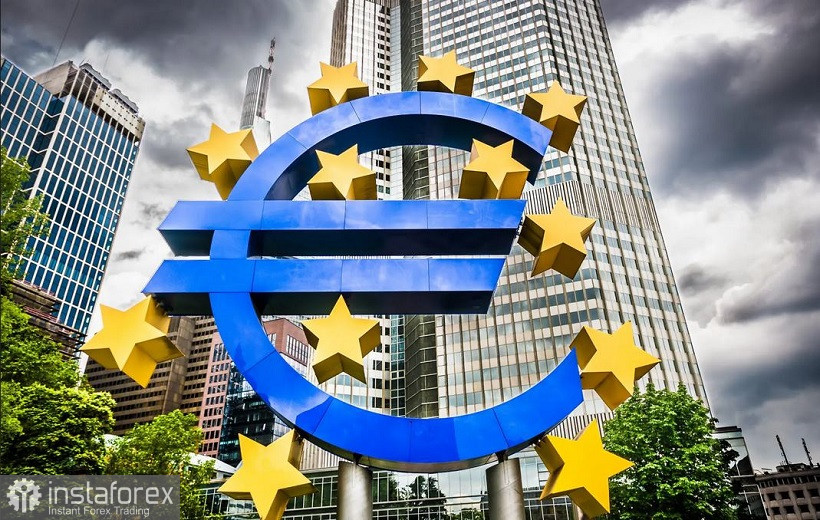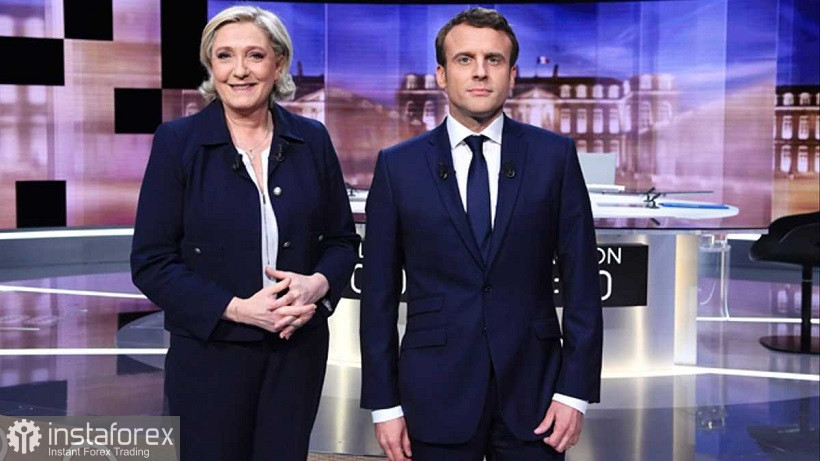The euro-dollar pair is slowly but surely sliding towards the base of the 8th figure. The latest inflation reports, which were published in the US, play on the greenback's side, strengthening the positions of dollar bulls. Also, the dollar's "allies" are geopolitical factors and the hawkish intentions of the majority of the Federal Reserve members. The European currency, in turn, is under the yoke of many problems that do not allow it to organize even a minimal counterattack. The downward trend is in force: over the past two weeks, the pair has declined by more than 300 points. Therefore, testing the 7th figure is only a matter of time.
Given this disposition, it is not necessary to talk about a trend reversal in the medium term. However, EUR/USD bulls may still organize a "corrective counteroffensive" in the near future, especially if tomorrow's European Central Bank meeting provides an appropriate occasion. Such a scenario is quite likely, especially against the background of record inflation growth in the eurozone and growing rumors that the ECB will decide on the first interest rate hike this year. Some experts call September as a temporary reference point, others – December, but the essence does not change from this. The very fact of hawkish intentions on the part of the ECB will provide situational support for the euro. If the central bank makes the first step in this direction within the current year, the single currency will receive temporary support, and the EUR/USD pair will be able to go into correction.

However, it should be noted here that the upward pullbacks for the pair are a priori unreliable. Firstly, the market for the most part puts two rate increases in prices before the end of this year. Such expectations became relevant after the latest inflation release, which reflected an increase in the consumer price index in the eurozone to 7.5%. This is another historical record – the highest value of the indicator for the entire history of observations, that is, since 1997. At the same time, the core CPI jumped to a three percent mark.
It is obvious that the ECB will no longer be able to ignore this "inflation boom", once again repeating the mantra that the growth of key indicators is temporary. But judging by the previous rhetoric of the ECB representatives, any tightening of the ECB's policy this year will be exclusively in the context of the termination of its QE programs. Most representatives of the central bank are hesitant to talk about the prospects of a rate hike in the foreseeable future, with the exception, perhaps, of Holzmann, Kazimir and Schnabel.
And here it is necessary to understand one simple point: if all the "hawkishness" of the ECB tomorrow comes down to announcing an earlier completion of the quantitative easing program, the euro will be under the strongest pressure. Moreover, in my opinion, the single currency will not receive support even if the central bank hypothetically allows the option of raising the rate in the second half of this year. This scenario is already partially embedded in the current prices, so it will not produce much effect. Only if the ECB "brings closer" the possible date of the first rate hike to June-July, then – quite likely – the euro will receive some support, including in a pair with the dollar.
But even in this case, it is not worth counting on a reversal of the EUR/ USD trend. It is advisable to use any corrective pullbacks on the pair as an excuse to open short positions, with the first target of 1.0805 (the low of the year, which now coincides with the lower line of the Bollinger Bands indicator on the daily chart), overcoming which will open the way to the area of the 7th figure.
After all, do not forget that the single currency is under the yoke of many fundamental factors – political and economic in nature. Firstly, the Russian-Ukrainian negotiations have reached an impasse at the moment. This is being talked about more and more often, and at the highest political level. Therefore, the geopolitical instability in Eastern Europe will continue to serve as an anchor for the euro. The energy crisis that is looming in the European region also does not contribute to the growth of the single currency, although it contributes to an increase in inflation.
Secondly, European investors are closely watching the political events in France. Let me remind you that following the results of the first round of the presidential elections, Emmanuel Macron and Marine Le Pen reached the final. The second round will take place on April 24 and at the moment the intrigue remains here. On the one hand, preliminary opinion polls reflect Macron's leadership (according to one poll, the ratio is 54%/46%, according to another poll – 52%/47%). But on the other hand, the gap is not so big – the situation can change dramatically after a public debate. In any case, a hypothetically possible victory for Le Pen is another factor of pressure on the euro. Yes, Macron's rival abandoned the idea of returning to the franc and refused to withdraw the country from the EU. But at the same time, she intends to ensure that this European structure "evolves", turning into a Union of Nations, not bound by the common laws of the European Union. If support for Le Pen grows among the French on the eve of the second round, the European currency will continue to lose its position.

Thus, short positions on the EUR/USD pair are still in priority, even if the ECB's April meeting turns out to be on the side of the euro. The main goal is 1.0805.
 English
English 
 Русский
Русский Bahasa Indonesia
Bahasa Indonesia Bahasa Malay
Bahasa Malay ไทย
ไทย Español
Español Deutsch
Deutsch Български
Български Français
Français Tiếng Việt
Tiếng Việt 中文
中文 বাংলা
বাংলা हिन्दी
हिन्दी Čeština
Čeština Українська
Українська Română
Română

